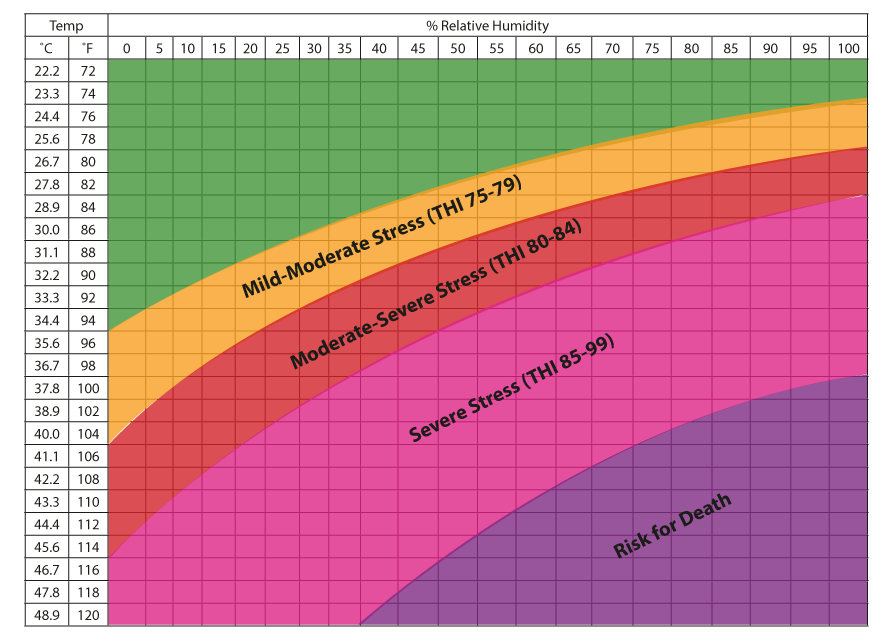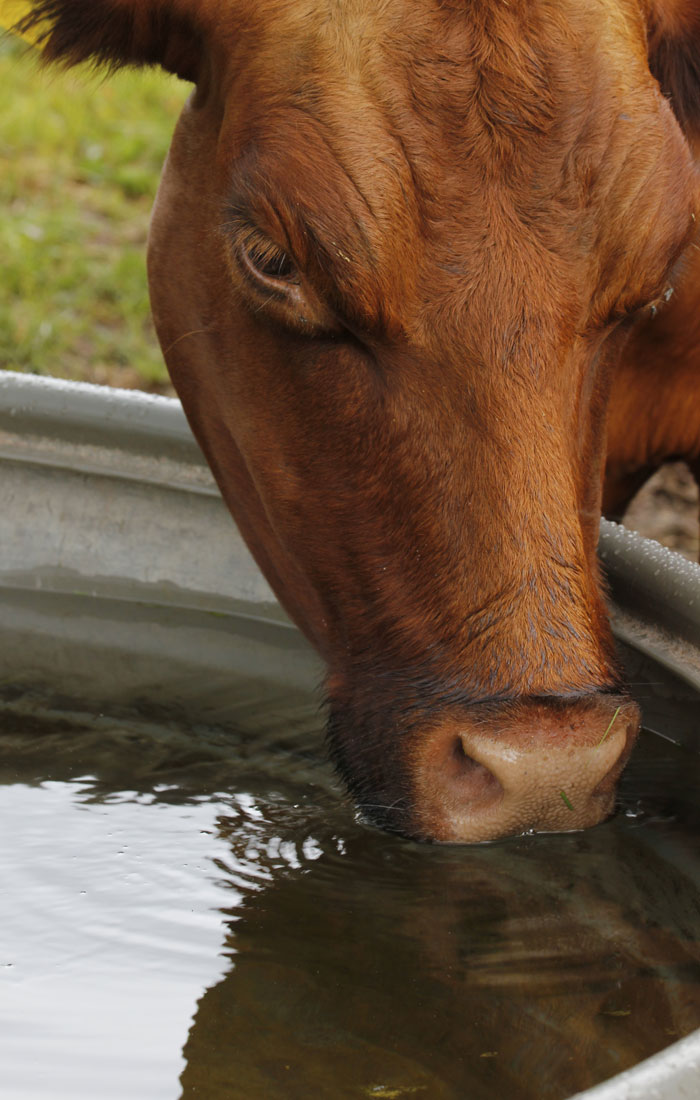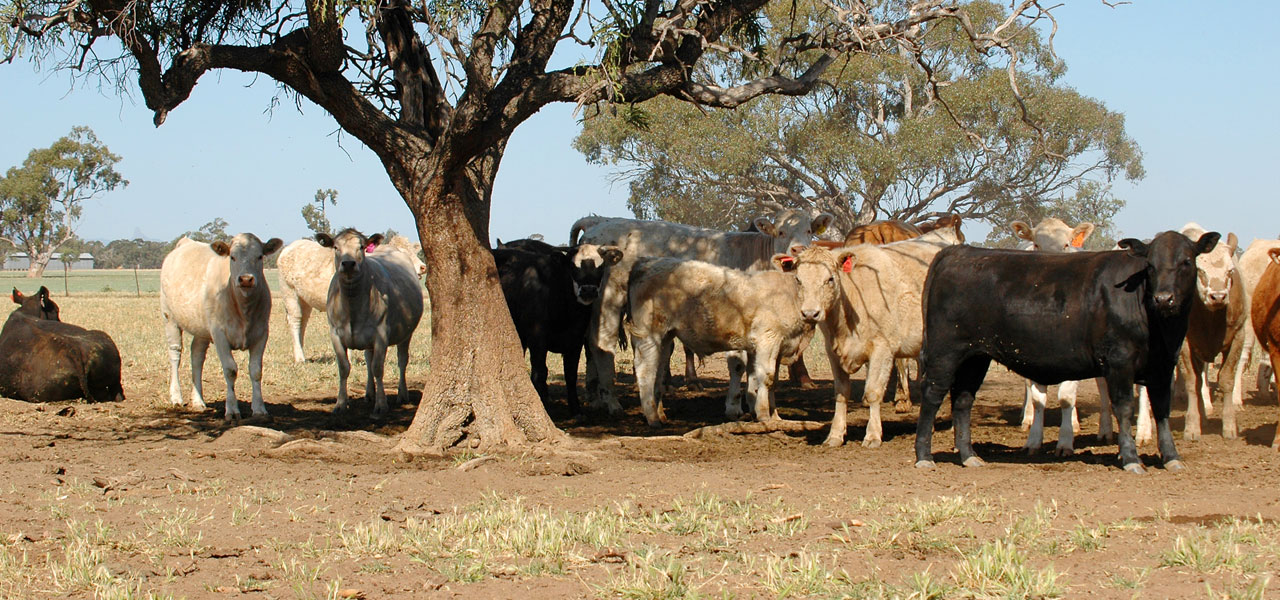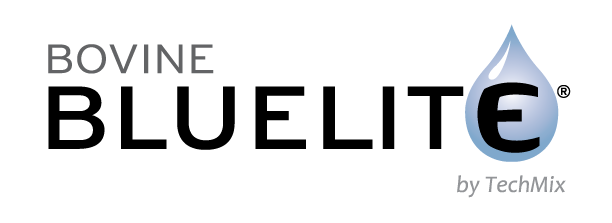Heat Stress Education
Heat stress occurs when an animal’s attempt to dissipate heat is unsuccessful or overwhelmed. The result is poor health or performance. The thermoneutral zone is the range of temperatures in which an animal (including humans) does not use energy to stay warm or stay cool. When temperatures rise above the thermoneutral zone, animals must expend energy to cool their bodies.
High temperatures are not always the sole reason for heat stress conditions as humidity is also a factor. The Temperature Humidity Index (THI) illustrates this combination of conditions and provides a guideline of when cattle are susceptible to the negative effects of heat stress.
Entering the danger zone
While feedlot cattle can generally handle air temperatures of up to 75-80 degrees without any negative effects on health or performance, every cattleman needs to know when to intervene. Cattle are in potential danger of death from heat exposure when the following occur:
• The heat index is 75 or greater for a 72 hour period
• The heat index during a 48 hour period is no lower than 79 during the day
and no lower than 75 during the night
• The daytime heat index reaches 84 or higher for two consecutive hours

PROPER HYDRATION MAKES EVERYTHING WORK BETTER
Visible signs of heat stress
- Bunching
- Slobbering
- High respiratory rates (panting)
- Open mouth breathing
- Seek shade or align themselves with the sun if there is no shade
- Eat and ruminate less
- Thirst and water intake increase markedly
- Decreased activity
- Agitation and restlessness
- Increased urination (with heavy electrolyte loss)
- Crowding over the water troughs
- Refusal to lay down
- Slower growth rates

Physiology effects of heat stress – long term
Gut health challenges:
- Ruminal pH is typically lower in heat stressed cattle
- Rates of gut and ruminal motility are reduced, thus slowing passage of feed through the digestive tract
- Increased susceptibility to parasitic and non parasitic diseases
Reproductive challenges:
- Alters the production of reproductive hormones essential for pregnancy
- Changes the balance of developing follicles in the ovary
- Embryonic development is affected
- Lower conception rates
- Increased fetal and postnatal mortalities
Survival before production:
- Resources diverted to survival functions to restore balance rather than production
- Production stops due to loss of homeostasis
- The incidence of respiratory infections increases due to compromised immune response and an over-stressed respiratory system
- Higher mortality
Other challenges:
- Gene function is disturbed
- Stress hormones appear in the blood
- Increased peripheral blood flow
- Slower recovery from environment and other production stresses
>50°F – Relative humidity at which evaporative cooling effectiveness drops
Hydration health
Bovine BlueLite helps cattle rehydrate in times of stress, including periods of heat stress, upon arrival to feedlots, and prior to shipping. As a high potassium electrolyte, Bovine BlueLite provides cattle with a source for quick replacement. Producers have seen increased profitability by using Bovine BlueLite as a way to improve carcass quality, reduce shrink loss, and reduce the potential for dark cutters.
Water and nutrition requirements
Fluids, including water, comprise an average of 60% of the total body weight of a beef or dairy animal. Of this total body fluid, 66% is found in cells and the remaining third is found in the soft tissue compartment and vascular system.
For beef cattle in thermoneutral conditions daily water intake should be 8-9% of total body weight. Water intake increases when the THI goes above 75 and a temperature increase from 50°F to 90°F can increase daily water requirements by two and a half times. During heat stress events a 1,000 pound feedlot steer may require in excess of 20 gallons of water. Therefore, access to abundant and clean water is vital but note that the huge water flux resulting from increased water consumption causes heavy loss of electrolytes – and potassium is the first electrolyte that is excreted. Potassium loss from the hide increases by 500% in unshaded cattle and in attempts to conserve potassium, cows increase urination excretion rates of sodium. However, if access to water is restricted or unavailable, intake can drip below what is required and feed intake also drops resulting in further compromises in health and performance.

Water loss
All cattlemen need to keep in mind that increased water consumption will also increase fluid loss. Most of this loss is natural and happens due to: urine, feces, sweat (to a limited degree), evaporation (from the lungs and skin).
Be aware that fluid loss will also increase the loss of certain minerals, such as sodium, potassium and magnesium. Therefore, electrolyte supplementation is an important nutrient intervention to aid health and performance.
Help ease the effects of heat stress with Bovine BlueLite
Bovine BlueLite comes in a convenient, powder or pellet and your cows are sure to love it.

